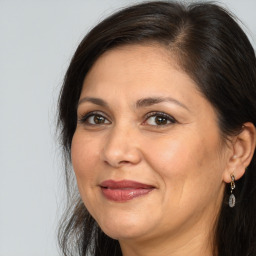1.0 Introduction
Edwin H. Armstrong, regarded as one of the pioneers of radio technology, invented the superheterodyne radio receiver in 1918 and developed frequency modulation (FM) in 1933. These two concepts, along with his regenerative circuit technique developed in 1912, formed the basis of radio frequency electronics as we know it today. In the United States, FM radio stations broadcast between radio frequencies of 88 MHz to 108 MHz with a channel bandwidth of 200 kHz. FM radio was first deployed in monaural in 1940; and in 1960, FM stereo was introduced.
Before defining frequency modulation, it is pertinent to understand what modulation means as applied to radio communications. Modulation is the process of converting low frequency signals into high frequency signals, so that they can be radiated and recovered at a remote location.Frequency modulation is a form of analog angle modulation in which the baseband information-carrying signal, typically called the message or information signal m(t), varies the frequency of a carrier wave. Audio signals transmitted by FM radio are the most common. However, FM radio can also transmit digital data with the low bandwidth digital information known as Radio Data System (RDS) in Europe and Radio Broadcast Data System (RBDS) in the U.S.
In telecommunications and signal processing, frequency modulation (FM) is the encoding of information in a carrier wave by varying the instantaneous frequency of the wave. This contrasts with amplitude modulation, in which the amplitude of the carrier wave varies, while the frequency remains constant.
In analog frequency modulation, such as FM radio broadcasting of an audio signal representing voice or music, the instantaneous frequency deviation, the difference between the frequency of the carrier and its center frequency, is proportional to the modulating signal.
Digital data can be encoded and transmitted via FM by shifting the carrier's frequency among a predefined set of frequencies representing digits - for example one frequency can represent a binary 1 and a second can represent binary 0. This modulation technique is known as frequency-shift keying (FSK). FSK is widely used in modems and fax modems, and can also be used to send Morse codes. Radio teletype also uses FSK.
Frequency modulation is widely used for FM radio broadcasting. It is also used in telemetry, radar, seismic prospecting, and monitoring newborns for seizures via EEG, two-way radio systems, music synthesis, magnetic tape-recording systems and some video-transmission systems. In radio transmission, an advantage of frequency modulation is that it has a larger signal-to-noise ratio and therefore rejects radio frequency interference better than an equal power amplitude modulation (AM) signal. For this reason, most music is broadcast over FM radio.Frequency modulation has a close relationship with phase modulation; phase modulation is often used as an intermediate step to achieve frequency modulation. Mathematically both of these are considered a special case of quadrature amplitude modulation (QAM).
The simplest approach to generating FM signals is to apply the message signal directly to a voltage-controlled oscillator (VCO).
A voltage message signal, m(t), is applied to the control voltage of the VCO, and the output signal, XFM(t), is a constant amplitude sinusoidal carrier wave whose frequency is ideally a linear function of its control voltage. When there is no message or the message signal is zero, the carrier wave is at its center frequency, fc. When a message signal exists, the instantaneous frequency of the output signal varies above and below the center frequency and is expressed by
fi(t) = fc + Kvcom(t)
Where Kvco is the voltage-to-frequency gain of the VCO expressed in units of Hz/V, and the quantity, Kvco*m(t), is the instantaneous frequency deviation. The instantaneous phase of the output signal is equal to 2Ï€ multiplied by the integral of the instantaneous frequency where the initial condition of the phase is assumed to be zero for simplicity.
A few observations can be made from the FM output signal. First, the amplitude of an FM signal is constant regardless of the message signal, giving it a constant envelope property with an output power equal to A2c /2 into a 1 Ω resistor. Secondly, the frequency-modulated output, xFM(t), has a nonlinear dependence to the message signal, m(t), making it difficult to analyze the properties of an FM signal. To estimate the bandwidth of an FM signal, a single tone messagesignal is used as shown below
m(t) = Am cos(2Ï€ fmt)
where Am is the amplitude of the message signal and fm is the frequency of the message signal.
1.1 Sinusoidal baseband signal
Mathematically, a baseband modulated signal may be approximated by a sinusoidal continuous wave signal with a frequency fm. This method is also named as Single-tone Modulation. The integral of such a signal is:
![]()
In this case, the expression for y(t) above simplifies to:

where the amplitude of the modulating sinusoid is represented by the peak deviation.
The harmonic distribution of a sine wave carrier modulated by such a sinusoidal signal can be represented with Bessel functions; this provides the basis for a mathematical understanding of frequency modulation in the frequency domain.
1.2 Modulation index
As in other modulation systems, the modulation index indicates by how much the modulated variable varies around its unmodulated level. It relates to variations in the carrier frequency:
![]()
where Fm is the highest frequency component present in the modulating signal xm(t), and is the peak frequency-deviation—i.e. the maximum deviation of the instantaneous frequency from the carrier frequency. For a sine wave modulation, the modulation index is seen to be the ratio of the peak frequency deviation of the carrier wave to the frequency of the modulating sine wave.If , the modulation is called narrowband FM, and its bandwidth is approximately .Sometimes modulation index h
For digital modulation systems, for example Binary Frequency Shift Keying (BFSK), where a binary signal modulates the carrier, the modulation index is given by:

where Ts is the symbol period, and Fm=1/2ts is used as the highest frequency of the modulating binary waveform by convention, even though it would be more accurate to say it is the highest fundamental of the modulating binary waveform. In the case of digital modulation, the carrier is never transmitted. Rather, one of two frequencies is transmitted, either Fc+F or Fc , depending on the binary state 0 or 1 of the modulation signal.
If , the modulation is called wideband FM and its bandwidth is approximately . While wideband FM uses more bandwidth, it can improve the signal-to-noise ratio significantly; for example, doubling the value of , while keeping constant, results in an eight-fold improvement in the signal-to-noise ratio. (Compare this with Chirp spread spectrum, which uses extremely wide frequency deviations to achieve processing gains comparable to traditional, better-known spread-spectrum modes).
With a tone-modulated FM wave, if the modulation frequency is held constant and the modulation index is increased, the (non-negligible) bandwidth of the FM signal increases but the spacing between spectra remains the same; some spectral components decrease in strength as others increase. If the frequency deviation is held constant and the modulation frequency increased, the spacing between spectra increases.
We tend to help you at every step regarding Academic Assistance
Get your Assignments Now!
Frequency modulation can be classified as narrowband if the change in the carrier frequency is about the same as the signal frequency, or as wideband if the change in the carrier frequency is much higher (modulation index >1) than the signal frequency. For example, narrowband FM is used for two way radio systems such as Family Radio Service, in which the carrier is allowed to deviate only 2.5 kHz above and below the center frequency with speech signals of no more than 3.5 kHz bandwidth. Wideband FM is used for FM broadcasting, in which music and speech are transmitted with up to 75 kHz deviation from the center frequency and carry audio with up to a 20-kHz bandwidth.
A key point of modulation index, β, is that it determines the bandwidth of the signal by determining the number of effective sidebands of an FM signal. For instance, if β=0.25, only one sideband is needed; while if β=5, eight sidebands are required. Another important point about the modulation index: it can change a lot even for a fixed frequency deviation because the message signal frequency can vary. In general, as the modulation index increases, the number of sidebands increases and the bandwidth goes up. However, the increase in modulation index due to decreasing message frequency (recall m β = ∆f/fm) may not necessarily increase the FM bandwidth. The bandwidth is equal to the number of discrete spectral tones multiplied by the frequency spacing set by the message signal frequency fm. For more complicated message signals, the bandwidth of an FM signal can also be approximated with Carson's rule, m BWFM≈2 (β + 1) fm [2, 3]. The empirical relation states that the number of significant spectral tones in an FM spectrum is ≈ 2 (β + 1), not including the carrier. For example [2], in North America, the maximum frequency deviation, ∆f, is 75 kHz for commercial FM broadcasting. If the maximum message frequency is equal to 15 kHz for audio, then β = 75 kHz/15 kHz = 5, and the FM bandwidth is BWFM = 2 (5 + 1) 15 kHz = 180 kHz. This is close to the allotted 200 kHz channel bandwidth. If the Bessel functions are used to approximate the bandwidth, the bandwidth of (2 x 8 +1)15 kHz = 255 kHz is achieved. In practice, the last few side tones may contribute negligible power, thus reducing the bandwidth to about 200 kHz (assuming the tones that are below -10 dBc are negligible). Again, it is important to remember that these equations are derived from a single tone message signal, which is much different from real-world message signals that contain many different frequencies at the same time. In this case, the maximum frequency of the real message signal can be used as an approximation for fm.
1.3 Modulation
FM signals can be generated using either direct or indirect frequency modulation:
Direct FM modulation can be achieved by directly feeding the message into the input of a VCO.
For indirect FM modulation, the message signal is integrated to generate a phase-modulated signal. This is used to modulate a crystal-controlled oscillator, and the result is passed through a frequency multiplier to give an FM signal. In this modulation narrowband FM is generated leading to wideband FM later and hence the modulation is known as Indirect FM modulation.
1.4 Demodulation
Many FM detector circuits exist. A common method for recovering the information signal is through a Foster-Seeley discriminator. A phase-locked loop can be used as an FM demodulator. Slope detection demodulates an FM signal by using a tuned circuit which has its resonant frequency slightly offset from the carrier. As the frequency rises and falls the tuned circuit provides a changing amplitude of response, converting FM to AM. AM receivers may detect some FM transmissions by this means, although it does not provide an efficient means of detection for FM broadcasts.
2.0 Applications of frequency modulation
2.1 Sound
FM is also used at audio frequencies to synthesize sound. This technique, known as FM synthesis, was popularized by early digital synthesizers and became a standard feature in several generations of personal computer sound cards.
2.1.1 Music synthesis techniques
All music synthesizers are analogue, digital or a hybrid thereof and employ one of three synthesis techniques, these being additive synthesis, subtractive synthesis and FM synthesis. In additive synthesis basic waveforms such as sine waves or saw-tooth waves are added together to make a unique sound. If the number of sine wave generators equals the number of harmonics in additive synthesis an exact match of a real sound can be made. This is done by making sure that the amplitude of each sine wave generator is equal to the real sounds harmonic at a particular point in time. The only problem is that up to 100 sine wave generators would be needed, each multiplied by a time varying envelope to match a sound with 100 significant harmonics. So instead combinations of high spectral content waveforms such as square waves are combined with sine waves to form new instruments. Subtractive synthesis makes use of pre-existing waveforms and sends them through a series of filters, thus "subtracting" spectra off the sound. These pre-existing waveforms could be the basic set such as square waves or complex samples of real sounds. The filters used are high-pass, low pass, band-pass and notch filters which usually have tune-able cut-off frequencies, roll-offs and resonances. The original Minimoogs made use of subtractive synthesis with four pole 19 (24dB/Oct) filters which gave them there typical "fat" sounds. FM synthesis is the process whereby one oscillator is used to change (modulate) the pitch (frequency) on another.
On most FM synthesizers such as the DX-7 one or more oscillators are pre-wired as the "control oscillators" with the performer switching output of these oscillators on and off as desired. These oscillators then control the signal oscillators. As will be shown in the remainder of the thesis, FM synthesis can produce a large amount of possible sounds for a relatively simple amount of electronics in the analogue domain or data manipulation in the digital domain. FM synthesis has become standard on many sound kits that one buys today. For example the Sound Blaster comes with the Yamaha OPL-2 chip with hundreds of pre-selectable instruments. One should in no way, however, judge the flexibility of FM-synthesis on these simple sounds, because no envelope functions are employed and usually only up to 4 oscillators are used. FM synthesis is an art that still challenges the audio specialist. Recent papers in Computer Music Journal (Beauchamp et al 1994) and the Journal of Audio Engineering Society of America (Tan et al 1994) confirm this.
Additive synthesis builds up sounds from sums of sinusoids with given frequencies and amplitudes that may vary over time. The advantage of additive synthesis is that any sound whatsoever can be represented. By doing a Fourier analysis of short windows of the sound you get a series of time frames of the spectrum at that moment. From that representation you would usually pick the strongest spectral peaks and synthesize the sound from a sum of sinusoids. This technique is known as the tracking phase vocoder. A popular extension is Spectral Modelling Synthesis (SMS) which incorporates noise.
Whereas additive synthesis has its corresponding analysis technique that lets you resynthesize (and modify) any sound, the situation is more difficult with FM. Traditionally, FM algorithms were tweaked by ear and by intuition. Then some researchers began searching for synthesis parameters that would match given sounds by genetic algorithms. That approach has mostly focused on harmonic sounds. In the early years of computer music efficiency concerns favoured FM over additive synthesis, but developments in algorithms and hardware makes that point moot.
Both FM and additive synthesis are useful for sound design, but there are of course other approaches worth knowing about, not least subtractive synthesis and physical modelling.
i.Square wave:
A square wave with the same frequency has its highest peak at the fundamental frequency and the power is reduced by 1/4 at each odd harmonic of the fundamental frequency.

ii.Sawtooth Wave:
A sawtooth wave includes both odd and even harmonics, and the power reduces by half at each harmonic.

2.2 Radio
As the name implies, wideband FM (WFM) requires a wider signal bandwidth than amplitude modulation by an equivalent modulating signal; this also makes the signal more robust against noise and interference. Frequency modulation is also more robust against signal-amplitude-fading phenomena. As a result, FM was chosen as the modulation standard for high frequency, high fidelity radio transmission, hence the term "FM radio" (although for many years the BBC called it "VHF radio" because commercial FM broadcasting uses part of the VHF band—the FM broadcast band). FM receivers employ a special detector for FM signals and exhibit a phenomenon known as the capture effect, in which the tuner "captures" the stronger of two stations on the same frequency while rejecting the other (compare this with a similar situation on an AM receiver, where both stations can be heard simultaneously). However, frequency drift or a lack of selectivity may cause one station to be overtaken by another on an adjacent channel. Frequency drift was a problem in early (or inexpensive) receivers; inadequate selectivity may affect any tuner.
An FM signal can also be used to carry a stereo signal; this is done with multiplexing and demultiplexing before and after the FM process. The FM modulation and demodulation process is identical in stereo and monaural processes. A high-efficiency radio-frequency switching amplifier can be used to transmit FM signals (and other constant-amplitude signals). For a given signal strength (measured at the receiver antenna), switching amplifiers use less battery power and typically cost less than a linear amplifier. This gives FM another advantage over other modulation methods requiring linear amplifiers, such as AM and QAM.
FM is commonly used at VHF radio frequencies for high-fidelity broadcasts of music and speech. Analog TV sound is also broadcast using FM. Narrowband FM is used for voice communications in commercial and amateur radio settings. In broadcast services, where audio fidelity is important, wideband FM is generally used. In two-way radio, narrowband FM (NBFM) is used to conserve bandwidth for land mobile, marine mobile and other radio services.
Read also:
Unit 9 Enterprise Assignment Level 4
Management Of Business Telecommunication
References
- Stan Gibilisco (2002). Teach yourself electricity and electronics. McGraw-Hill Professional. p. 477. ISBN 978-0-07-137730-0.
- David B. Rutledge (1999). The Electronics of Radio. Cambridge University Press. p. 310. ISBN 978-0-521-64645-1.
- B. Boashash, editor, "Time-Frequency Signal Analysis and Processing - A Comprehensive Reference", Elsevier Science, Oxford, 2003; ISBN 0-08-044335-4
- T.G. Thomas, S. C. Sekhar Communication Theory, Tata-McGraw Hill 2005, ISBN 0-07-059091-5 page 136
- Der, Lawrence, Ph.D., Frequency Modulation (FM) Tutorial,http://www.silabs.com/Marcom%20Documents/Resources/FMTutorial.pdf, Silicon Laboratories, Inc., accessed 2013 February 24, p. 5
- B. P. Lathi, Communication Systems, John Wiley and Sons, 1968ISBN 0-471-51832-8, p, 214-217























